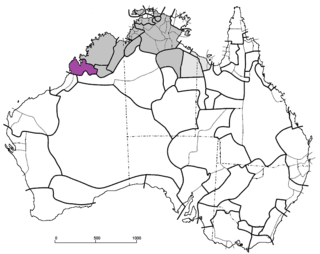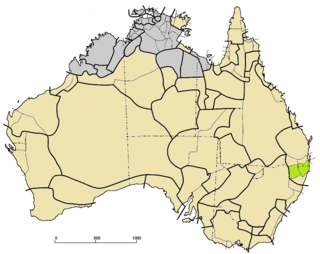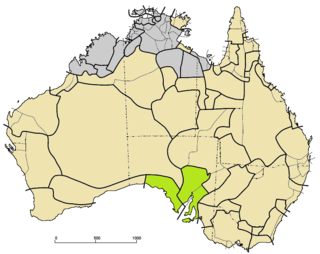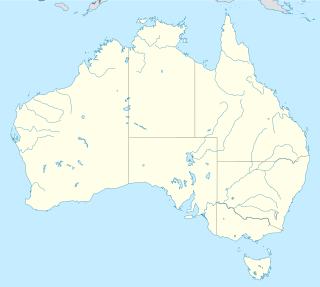Mingginda or Minkin is an extinct Australian Aboriginal language, perhaps a language isolate, of northern Australia. It was spoken by the Mingin people in the area around Burketown, on the southern coast of the Gulf of Carpentaria, in an area that contains the headwaters of the Leichhardt River.

Maningrida, also known as Burarran, is a small family of Australian Aboriginal languages spoken in northern Australia. It includes four languages, none closely related:

The Nyulnyulan languages are a small family of closely related Australian Aboriginal languages spoken in northern Western Australia. Most languages in this family are extinct, with only 3 extant languages, all of which are almost extinct.
Worimi, or Gadjang is an Australian Aboriginal language. It is the traditional language of the Worimi people, whose descendants now speak English.

Yugambeh–Bundjalung, also known as Bandjalangic is a branch of the Pama–Nyungan language family, that is spoken in northeastern New South Wales and South-East Queensland.
Jukun or Djugun is an Australian Aboriginal language of Western Australia. There are no longer any fluent speakers of Jukun, but some people may remember it to some degree. It is an Eastern Nyulnyulan language, closely related to Yawuru.

The Yura or Thura-Yura languages are a group of Australian Aboriginal languages surrounding Spencer Gulf and Gulf St Vincent in South Australia, that comprise a genetic language family of the Pama–Nyungan family. The name Yura comes from the word for "person" in the northern languages; this is a lenited form of the thura found in other languages, hence Thura-Yura. Similar words for "person" are found in languages outside the group, however.

Dalabon is a Gunwinyguan language of Arnhem Land, Australia. It is a severely endangered language, with perhaps as few as three fluent speakers remaining as of 2018. Dalabon is also known as Dangbon, Ngalkbun, and Buwan.
Gurr-goni, also spelled Guragone, Gorogone, Gun-Guragone, Gunagoragone, Gungorogone, Gurrogone, Gutjertabia, is an Australian Aboriginal language spoken in Arnhem Land. There were about 60 speakers in 2011, all trilingual in Burarra or Gunwinggu.
Ndjébbana, also known as Djeebbana, Kunibidji, Gunavidji, Gunivugi, or Gombudj, is a Burarran language spoken by the Kunibidji people of North-central Arnhem Land, Australia.
Burarra is an Australian Aboriginal language spoken by the Burarra people of Arnhem Land. It has several dialects.
Umpila is an Aboriginal Australian language, or dialect cluster, of the Cape York Peninsula. It is spoken by about 100 Aboriginals, many of them elderly.
Wagaya (Wakaya) is an extinct Australian Aboriginal language of Queensland. Yindjilandji (Indjilandji) may have been a separate language.
Nyiyaparli is a nearly extinct Pama–Nyungan language spoken by the Palyku (Bailko) and Niabali (Jana) people of Western Australia. There's a formal language register known as padupadu.

The Garawan languages (Garrwan), or Yanyi, are a small language family of Australian Aboriginal languages currently spoken in northern Australia.
Melissa Anne Perry is an Australian lawyer and a Judge of the Federal Court of Australia. Perry was appointed to the Federal Court in September 2013.
The Ganggalida are an Indigenous Australian people who traditionally lived on the gulf coast west of sv:Moonlight Creek and the Mingginda. Many of their descendants now dwell in and around Mungubie (Burketown) in northern Queensland.
The Garrwa people, also known as Garawa, are an Indigenous Australian people living in the Northern Territory whose traditional lands extended from east of the McArthur River at Borroloola to Doomadgee and the Nicholson River in Queensland.
The Totj were an indigenous Australian people of far northern Queensland.







